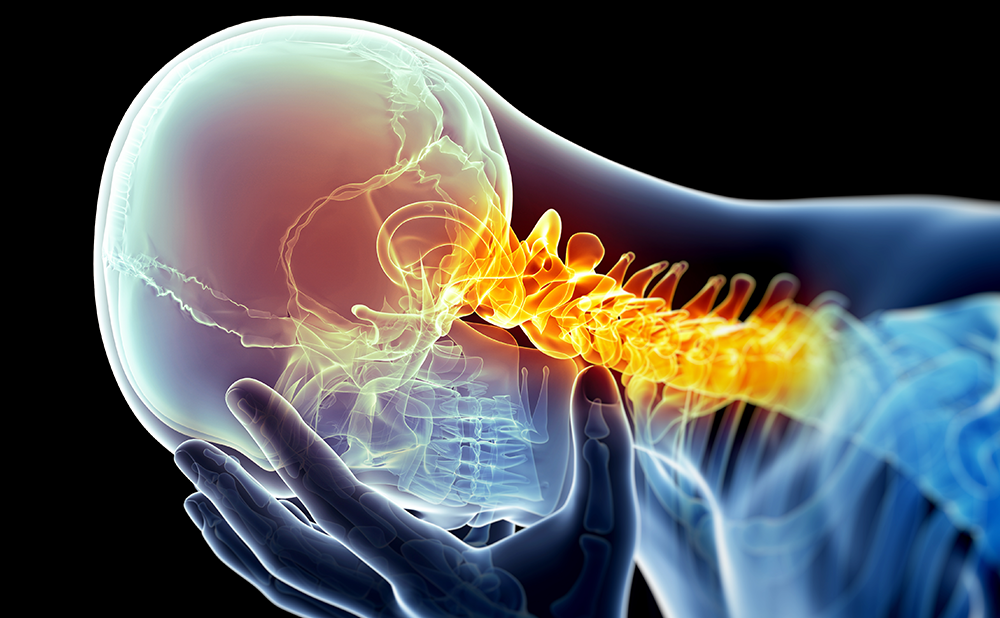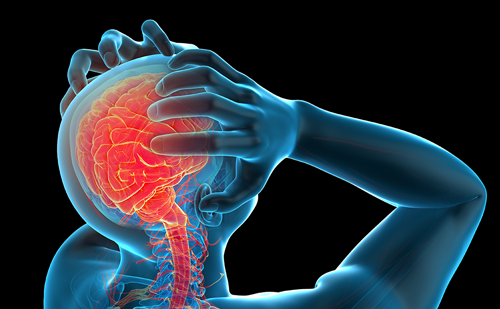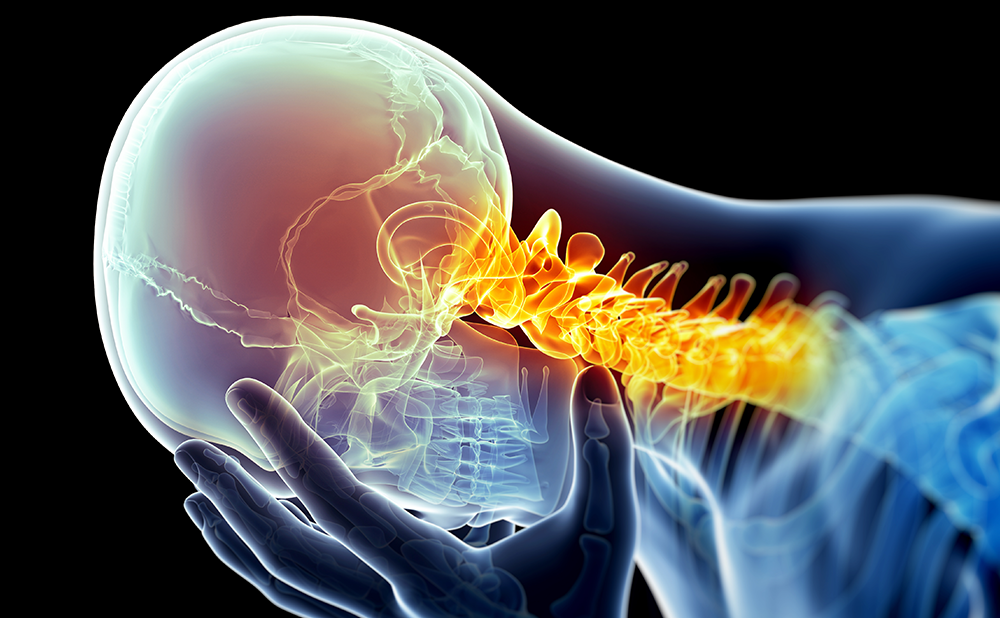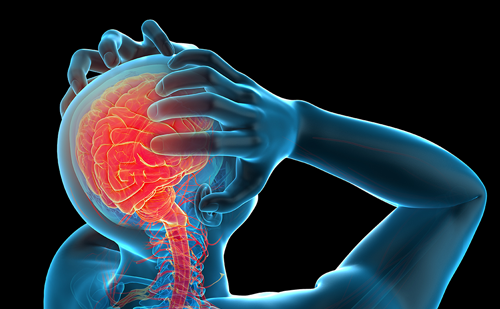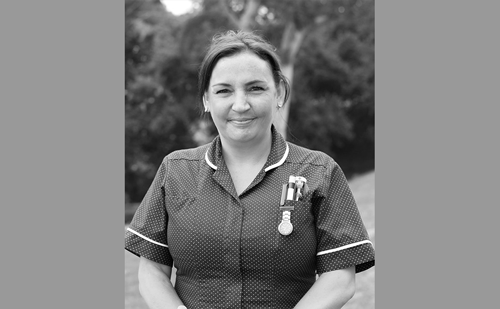Migraine is a highly prevalent disorder, affecting 27 million women and 10 million men in the US.1 Over the course of a lifetime, 43% of women and 18% of men will experience migraine.2 Direct and indirect costs from migraine exceed $15 billion per year in the US alone.3 Migraine patients suffer the burdens of acute and sometimes chronic pain, discomfort from environmental sensitivities, and inability to fully contribute in their personal and professional lives. A better understanding of migraine mechanisms is needed so that more successful migraine therapeutics can be developed. Functional and structural neuroimaging has played and will continue to play an essential role in elucidating migraine pathophysiology. Advanced neuroimaging techniques may eventually assist in the diagnosis and treatment of individual migraine patients and may facilitate the development of new migraine therapies.
Neuroimaging Techniques and Timing
Multiple neuroimaging techniques have been utilized to investigate structural and functional aberrations associated with migraine. Most of the recently published migraine studies have used magnetic resonance imaging (MRI) techniques such as perfusion weighted imaging (PWI), diffusion tensor imaging (DTI)/tractography, functional MRI (fMRI), voxel-based morphometry (VBM), high-resolution MRI, and MR angiography (MRA).
PWI is a technique that requires a contrast bolus to quantify cerebral blood flow. PWI also provides data about cerebral blood volume and mean transit time—the time it takes the bolus material to travel from the arterial to the venous phase. DTI utilizes the anisotropic movement of water molecules to identify and display the orientation of white matter tracts. High-resolution MRI provides information about paramagnetic compounds in the brain such as iron. fMRI provides information about functional activity in the brain based on the underlying assumption that changes in the blood-oxygen-level-dependent (BOLD) signal reflects neural activity. VBM is a technique that uses voxel-wise parametric statistical tests to investigate regional differences in brain anatomy. MRA images arteries either by using a paramagnetic contrast material such as gadolinium or by identifying movement of blood into the imaging plane using 2D or 3D time-of-flight sequences. Other migraine studies have used positron-emission tomography (PET). PET is a nuclear medicine imaging technique that uses radionuclide-labeled tracer to create a 3D image of functional processes in the body. Ultimately, the choice of neuroimaging technique to study migraine depends on the available resources and the nature of the scientific question.
Another decision in migraine neuroimaging relates to the timing of the study with respect to attack onset. Imaging may occur at the onset of migraine aura, at the onset of headache pain, once the migraine attack is well established, and/or between migraine attacks (interictal). Imaging the onset of spontaneous attacks proves difficult due to their unpredictable timing. This problem has been addressed in large part by introducing migraine triggers (e.g. photic stimulation, exercise) or administering triggering substances (e.g. nitroglycerin). There have been only a few migraine studies that have successfully captured the onset of migraine attacks. More often, patients have been imaged within minutes to a few hours after migraine onset. In these cases, however, transient changes that might have occurred during the premonitory phase or at the onset of pain may have been missed. Other studies have focused on long-term changes in the brains of migraineurs, which can be detected during the interictal period.
Neuroimaging Advances in Migraine
A large proportion of migraine neuroimaging research has focused on investigating migraine pathophysiology. Neuroimaging has helped to transform our basic understanding of migraine pathophysiology from a primary vascular disorder, to a neurovascular disorder, and more recently to a primary central nervous system (CNS) disorder. In keeping with the vascular and neurovascular theories, migraine pain has been assumed to be dependent on the dilation of cerebral and meningeal arteries.4,5 However, recent neuroimaging has challenged this assumption. A 3T MRA study of 20 nitroglycerin-induced migraine without aura attacks failed to show any significant differences in cerebral artery diameter or cerebral blood flow during the migraine attacks.6
It is hoped that imaging migraine onset will lead to identification of the brain structure(s) responsible for generating migraine attacks. Cao and colleagues used fMRI to study migraine onset following recurrent checkerboard visual stimulation.7 There were consistent increases in signal intensities in the red nucleus and substantia nigra, followed by increases in the occipital cortex and then onset of visually triggered symptoms. This finding is in agreement with previous studies implicating midbrain structures in migraine and pain processing.8
In a study by Afridi and colleagues, five migraineurs (two with aura and three without aura) underwent PET imaging within 24 hours of migraine onset and again between migraine attacks (greater than 72 hours from the end of their last migraine).9 Compared with the interictal period, migraine was associated with significant activations in the dorsal pons, anterior and posterior cingulate cortex, insula, prefrontal cortex, temporal lobes, thalamus, and cerebellum. With multiple areas activated, it becomes difficult to discern those that are related to the pain experience from those involved in the generation of the attack. To address this issue, 24 participants underwent PET during a nitroglycerin-induced migraine and following effective abortive therapy with sumatriptan.10 Although numerous regions were activated during the migraine, only the dorsal pons remained activated following treatment. It is hypothesized that brain regions involved with ongoing pain deactivated following treatment, while the migraine generator remained active.
Further evidence that the dorsal pons, and more specifically the dorsal rostral pons, may be the migraine generator comes from Matharu and colleagues’ PET study of eight patients with chronic migraine who were treated partially and then fully with occipital nerve stimulation.11 There was increased activity in the dorsal rostral pons during untreated migraine that persisted when the patients became pain-free with stimulation. Taken together, these studies imply that the migraine generator may be in the dorsal rostral pons.
Cortical spreading depression (CSD) is recognized as the physiologic mechanism of migraine aura. There is recent debate regarding a potential role of CSD in migraine without aura. During CSD there is an initial neuronal depolarization, followed by hyperpolarization, and then relative neuronal silence. There are associated changes in cerebral blood flow with an initial brief decrease, followed by an increase lasting minutes, and then finally a prolonged decrease.12,13 CSD begins in the occipital cortex and spreads forward at a rate of 3–5mm/minute, coinciding with the typical progression of visual symptoms during migraine aura.
Recent neuroimaging studies have provided further information about this process in humans. In an fMRI study of three migraine with aura patients imaged within 20 minutes of attack onset, an initial increase in BOLD signal was detected in the extrastriate cortex coinciding with the onset of migraine aura.14 This BOLD signal increase progressed over the occipital cortex at 3–5mm/minute and then was followed by reduction in BOLD signal. An MRI PWI study that imaged five migraine with aura attacks within 45 minutes of onset demonstrated decreased cerebral blood flow (16–53%), decreased cerebral blood volume (6–33%), and increased mean transit time (10–54%) in the occipital cortex.15
Whether or not CSD occurs during migraine without aura is a matter of continued debate. In one instance, a volunteer for a non-migraine-related PET study serendipitously had a typical migraine without aura during her scan.16 As potential evidence of CSD in migraine without aura, there was decreased cerebral blood flow in the bilateral occipital lobes that progressed forward to the parietotemporal lobes. However, she did report a mild problem with focusing her vision, raising the question of whether she actually had an aura symptom.
Another PET study of seven migraine without aura patients with an average time to scan of about three hours revealed relatively decreased cerebral blood flow in the bilateral occipital, parietal, and temporal cortex.17 With several other studies showing no change in cerebral blood flow during migraine without aura, it cannot be concluded whether or not CSD occurs during migraine without aura.18,19
Since CSD may be capable of activating trigeminal sensory afferents leading to migraine pain, inhibiting CSD could be an important therapeutic mechanism.20 Animal studies have shown that several currently used migraine prophylactics lower the frequency of CSD events and increase the threshold to activate CSD.21 However, not all compounds that are able to do so have provided clinical benefits in human migraine trials (e.g. tonabersat).22 Further study of CSD in migraine with and without aura is needed to elucidate its potential role in migraine without aura and to investigate whether CSD can trigger the headache of migraine.
Neuroimaging studies have also investigated central sensitization, a process that may lead to increased pain from cutaneous allodynia and reduced efficacy of migraine medications, and may contribute to migraine chronification.23 During a migraine approximately 65% of patients report cutaneous allodynia, a condition in which an innocuous stimulus such as light touch of the skin causes pain.24,25 Furthermore, a proportion of migraine patients have persistent sensitization between migraine attacks.26
Identifying CNS structures that might be specific to central sensitization and not just related to the increased pain from cutaneous allodynia has been the focus of recent fMRI studies. Using a heat/capsaicin model of sensitization, sensitization was found to be associated with increased activity in the midbrain reticular formation including the nucleus cuneiformis, rostral superior colliculus, and periaqueductal gray.27,28 In another fMRI study, painful mechanical stimulation was applied to normal skin and capsaicin-sensitized skin before and after use of gabapentin.29 Gabapentin reduced activations in the operculoinsular cortex after stimulation of both sensitized and normal skin. However, gabapentin had additional effects in subjects with capsaicin sensitization. In these subjects there were reduced activations in the brainstem and suppression of deactivations in several structures. Thus, it seems that gabapentin has differing effects on brain activity in the presence of capsaicin-induced sensitization. Further studies identifying brain regions where medications exert their effects may lead to more targeted therapies to prevent and combat central sensitization and improve migraine treatment.
Neuroimaging has been used to study the effects of migraine abortive treatments and the overuse of such treatments. The overuse of certain migraine abortive medications (e.g. butalbital, opiates, triptans) is associated with an increased risk of transforming from episodic to chronic migraine and may cause mediation-overuse headache (MOH) (commonly referred to as ‘rebound headaches’).30 PET studies of MOH have investigated brain metabolism during medication overuse and three weeks after medication withdrawal.31 Multiple areas of altered metabolism present during MOH reverted to normal following medication withdrawal, with the exception of the orbitofrontal cortex. The orbitofrontal cortex was hypometabolic during MOH and had a further reduction in metabolism after discontinuation of the analgesic. This study suggests that MOH may have shared characteristics with more typical forms of drug dependence (e.g. dependence on illicit drugs). However, it must be noted that at the time of imaging following medication withdrawal patients had not yet experienced improvement in their headaches. Since it can take two months or longer before medication withdrawal results in headache improvement, imaging at two months or longer after withdrawal would be a useful addition to future studies.
Advanced neuroimaging can also add to our knowledge about the mechanisms of migraine medications. A PET study of six migraine patients looked at the effect of sumatriptan, a serotonin (5-HT1B/1D) agonist used to abort migraine, on serotonin synthesis rates.32 Images were collected within six hours of migraine onset, two hours following treatment with sumatriptan, and three or more days after the end of the migraine attack. These images were compared with those collected from normal pain-free controls. There was an increased rate of serotonin synthesis early in the migraine attack and a reduced rate when attack-free. There was an even lower rate of serotonin synthesis two hours after use of sumatriptan. This change in serotonin synthesis was not accompanied by a change in reported pain levels, suggesting that the site of reduced synthesis is not the same as the site of pain modulation. It is possible that reductions in pain from sumatriptan are due to its activity at serotonin receptors in the trigeminal nucleus caudalis or periaqueductal gray, while activity at receptors in raphe nucleus is responsible for the reduction in serotonin synthesis.33
Structural neuroimaging has been used to investigate the association of stroke and white matter lesions with migraine. Interictal imaging has suggested a positive association of migraine with deep white matter lesions and stroke. Migraine sufferers have roughly double the relative risk for stroke compared with the general population, a risk that is further increased in those who are younger, smoke, and/or use oral contraceptives.34–36 This increased stroke risk is most prominent when considering cerebellar strokes in patients who have migraine with aura and one or more headaches per month, where the adjusted odds ratio is 15.8 (95% confidence interval [CI] 1.8–140).37 Migraine is also associated with an increased risk for deep white matter lesions. Migraine patients with at least one attack per month have an odds ratio of 2.6 for deep white matter lesions.37 It should be noted that the vast majority of lesions are asymptomatic, and the clinical significance of these neuroimaging findings is thus unclear.
Additional structural changes in migraine have been detected using high-resolution MRI and DTI. High-resolution MRI has been used to study iron deposition in the migraine brain. In a study comparing patients with MOH (who had transformed from episodic migraine), those with episodic migraine, and non-migraine controls, increased iron deposition was found in the periaqueductal gray in those with episodic migraine and those with MOH.38 A second study of 138 migraineurs under 50 years of age detected increased iron in the putamen, globus pallidus, and red nucleus compared with matched controls.39 Both studies found that increased iron deposition was positively correlated with longer duration of disease, raising the possibility that this represents a cumulative long-term structural change in deep brain nuclei in migraine patients.
In a DTI study of 34 migraine patients with otherwise normal-appearing brains on MRI, microstructural damage was evident by a decrease in diffusivity peaks in normal-appearing brain tissue of migraineurs compared with controls.40 DTI has shown changes in structures previously implicated in migraine pathophysiology including the thalamus (ventral posteromedial nucleus [VPM]) and the corona radiata along the trigeminothalamic tract.41 In migraine without aura patients, a DTI study showed decreased fractional anisotropy in the periaqueductal gray.41 DTI has been used to study the visual motion processing network, a network hypothesized to be abnormal in migraine. Abnormalities have been identified in the superior colliculus, lateral geniculate nucleus, and optic radiations.42,43 Functional neuroimaging has further advanced our understanding of the visual system in migraine with fMRI showing enhanced interictal reactivity of the occipital cortex and MR spectroscopy revealing decreased N-acetylaspartate and increased lactate in migraine with aura compared with controls.44,45
Despite early studies failing to show a difference between migraine and control subjects, several recent VBM investigations have found both gray and white matter aberrations in migraineurs.46 In a study of 28 migraineurs, decreased density was seen in the frontal, parietal, and occipital white matter and the frontal gray matter compared with non-migraine controls.47 Patients with a higher frequency of migraine and a longer overall duration of disease had greater density differences compared with those with less frequent attacks and a shorter length of disease.
Another study of 16 episodic migraine and 11 chronic migraine subjects revealed decreased gray matter density in regions of the frontal and temporal lobes (precentral gyrus, superior and inferior temporal gyri) compared with controls, and decreased gray matter densities in the anterior cingulate cortex, insula, amygdala, parietal operculum, and middle and inferior frontal gyri in chronic migraine compared with episodic migraine.48
A third study focused on examining whether there are gray matter density changes in patients with migraine with known white matter changes on MRI.49 Decreased gray matter density in the bilateral frontal and temporal lobes and cingulum as well as increased gray matter density in the periaqueductal gray were identified. Decreased densities correlated with white matter lesion load, age, and length of disease.
A separate VBM study looking at 20 subjects with migraine and normal brain MRIs detected gray matter differences in multiple brain regions including the insula, prefrontal cortex, cingulate, posterior parietal cortex, and orbitofrontal cortex.50 Once again, decreased density was related to longer disease duration and increased lifetime headache frequency.
The positive correlation between migraine severity and duration with structural differences suggests that migraine may in fact be causing structural brain damage. However, whether these brain density changes are of any clinical consequence is only beginning to be explored. This has been investigated by comparing 25 patients with migraine with normal individuals with respect to VBM measures and performance on an executive function task. In migraine patients with decreased gray matter density in the frontal and parietal lobes, there was laboratory evidence of impairments in executive function.51
The etiology, role in migraine or chronic pain pathophysiology, and clinical significance of these findings nonetheless remain subjects of debate. Similar frontal and temporal lobe gray matter differences have been seen in other types of headaches and in non-headache chronic pain disorders leading some to conclude that the differences are primarily a result of frequent pain and not necessarily specific to migraine.52 Further study is needed to investigate whether these aberrations are reversible with effective treatment and with natural resolution of migraine.
Future Directions
Migraine neuroimaging investigations will continue to assist in elucidating migraine pathophysiology, identifying structural and functional aberrations associated with migraine, and will aid in understanding mechanisms of therapy. We believe that advanced techniques will eventually be useful on the individual patient level to assist with diagnosis of primary headache disorders and to guide treatment decisions. Identification of the elusive migraine generator, the region of the brain responsible for inciting a migraine attack, is likely to come from neuroimaging studies. The fact that the dorsal pons remained active following effective abortive treatment and occipital nerve stimulation has raised the possibility that the migraine generator may lie within the dorsal pons.11,53 Functional imaging will help to clarify whether CSD is an event isolated to migraine with aura or if it also precedes migraine without aura attacks. Its presence in the absence of aura would link the two migraine disorders more closely and suggest that cortical spreading depression is clinically silent during migraine without aura attacks. Regardless, further work to determine the benefits of treatments to prevent CSD is warranted. If CSD is found to be an effective therapeutic target, neuroimaging might prove useful as a way to screen new prophylactic therapies. In addition, future work will help to further delineate the mechanisms, and perhaps the prevention and treatment, of central sensitization in migraine.
Neuroimaging will also help to identify the mechanisms by which overuse of abortive headache medications leads to more frequent headaches and MOH. These studies might further explore the role of the orbitofrontal cortex, a region that has been implicated in prior studies.31 Neuroimaging might be useful to determine the risk for MOH and to differentiate MOH from other chronic headache disorders.
Several advanced neuroimaging techniques have demonstrated structural changes in the migraine brain. This has included strokes and deep white matter lesions seen with conventional MRI, microstructural brain damage revealed by DTI and tractography, accumulation of iron deposits demonstrated by high-resolution MRI, and decreased density in gray and white matter regions discovered by VBM.34,37,38,40,47 Overall, the clinical significance of these findings remains largely unknown. Studies investigating potential associations between these structural aberrations and possible clinical manifestations are needed. Longitudinal studies would help to confirm or refute cumulative structural changes with longer duration of migraine.
Emerging neuroimaging techniques such as arterial spin labeling (ASL) and functional connectivity MRI (fcMRI) will likely be valuable new techniques to study migraine. ASL allows for quantification of blood flow without the need for contrast injection and without exposure to radioactive tracers. Like BOLD fMRI, ASL can detect task-induced changes in brain function. fcMRI investigates the functional connectivity, as opposed to anatomic connectivity, between brain regions. This technique is based on the observation that the resting brain has very slow (<0.1Hz), continuous fluctuations in BOLD activity. Regions of the brain that participate in similar functions, even if anatomically distant from one another, tend to have stronger temporal correlations in these BOLD fluctuations than brain regions that do not have shared functions.54,55 fcMRI allows for identification of brain regions that comprise brain functional networks. The strength of connectivity between regions within networks and between different networks can be altered in the presence of disease.56,57 Early studies of fcMRI in episodic and chronic migraine suggest aberrations in functional networks.58,59
We are hopeful that advanced neuroimaging techniques will eventually be useful at the level of the individual patient. By using neuroimaging to define pathways or patterns of activation in different disorders, imaging could be used to aid in difficult clinical diagnoses such as differentiating MOH from chronic migraine before medication withdrawal or side-locked chronic migraine from hemicrania continua. Neuroimaging techniques might eventually aid in medical decision-making regarding the choice of best therapies, the timing of discontinuing migraine prophylactic therapies, and the risk for MOH. ■


